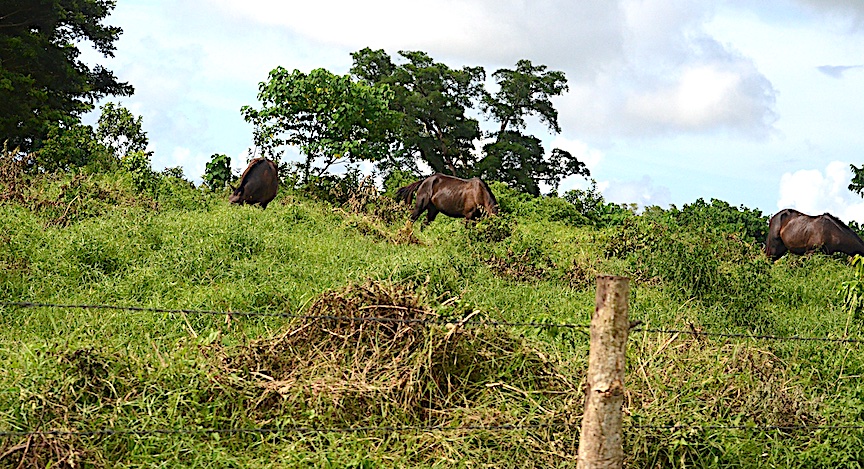With growth set to return to the region after three volatile years, Pacific governments should seize the moment and prepare their budgets for the next crisis.
By Stephen N. Ndegwa – World Bank’s Country Director for the Pacific.
In Samoa last week, I met Ioane Henry Leota at his cattle farm at Siumu village, 30 minutes outside of
Apia. A farmer for seven years, Ioane used the pandemic period to invest in expanding his cattle stock
from 20 to 33 and update his equipment – including a more reliable water supply, fencing, and
expanding pasture.
These kinds of investments – in this case facilitated by a government matching grant program, funded
by the World Bank – are clearly transformative for Ioane’s business and his family, and are contributing
to the resurgence we are witnessing across the Pacific.
More importantly, they contribute to long-term economic resilience for the country.
Similarly, when I was recently visiting Viti Levu in Fiji, I saw a country on the rebound. Fiji’s doors are
well and truly open. Its tourism sector is ramping back up. And the picture is clear: one of the Pacific’s
largest economies is on the move again.
Samoa’s resilience, and Fiji’s return to growth, are two of the strong stories in our Pacific Economic
Update, the World Bank’s new report which tracks the health of 11 Pacific Island economies and
anticipates the challenges and expectations of the year ahead.
The report is being released after a challenging three years for the Pacific Islands.
As COVID-19 began circulating in early 2020, governments in the Pacific were quick to act. Many Pacific
governments realized that their health systems weren’t prepared to cater for an unprecedented
national health emergency like COVID.
Pacific governments’ decision to shut their borders proved effective. But while border closures were
necessary, they came at a cost, to Pacific economies overall, but especially to tourism dependent
economies. Fiji, Vanuatu, Samoa, Tonga, and Palau all saw their economic growth fall dramatically.
Elsewhere, weakening global economic conditions lowered demand for Pacific goods and a lack of travel
caused major delays in new infrastructure projects and maintenance for existing ones, creating similarly
acute negative growth. By the beginning of 2022, things appeared to be turning the corner as vaccines
were more readily available and borders were starting to open in several countries.
But then more shocks came. In Solomon Islands, riots broke out in Honiara, and in Tonga, ash descended
on Nuku’alofa in the wake of Hunga-Tonga-Hunga-Ha’apai’s eruption and tsunami. Both events
coincided with serious waves of COVID, and by early 2022, Russia’s invasion of Ukraine was sending
economic shockwaves all the way to Pacific shores.

These were unprecedented multiple shocks for the region. The World Bank’s new Pacific Economic
Update looks at these challenges and details their impacts on the Pacific.
For 2023, the update offers some positive news: for the first time in three years, every single Pacific
Island economy is expected to return to economic growth. In some cases, this growth will be rapid. Our
analysis anticipates Palau’s economy will see 18 per cent growth in 2023, on the back of returning
tourism. And in countries where tourism is less of an economic driver, growth is expected to return as
international demand for Pacific exports, such as fish and timber, grows, and important infrastructure
needs are met.
But this recovery shouldn’t be taken for granted; nor does resilience simply just happen; it requires
careful policy and investment actions by government, families, and businesses. The Pacific Economic
Update recommends Pacific governments build on these gains throughout 2023 to better prepare for
disruptions that may emerge in the future.
While Pacific governments managed the pandemic effectively, the costs to countries’ economies were
high. In Fiji, for example, GDP fell nearly 20 percent (with consequent declines in tax revenue) and
COVID-19 spending grew to support households and businesses. Public debt climbed to about 80
percent of GDP in 2021.
Given the smaller size of Pacific economies, a risk of debt distress can limit the ability to respond to
future emergencies, which is particularly concerning in our region that faces climate impacts along with
present global uncertainties. In the longer run, high debt risk may decrease the quality of services and
standards of living for the people of the Pacific.
Our Pacific Economic Update offers options for reform. No one would have predicted such a volatile
start to the 2020s; nor can we predict what’s to come. Yet we do know that preparation and economic
buffers are essential tools in any response, and in building the resilience that – as we’ve learned so
clearly in recent years – is vital.
